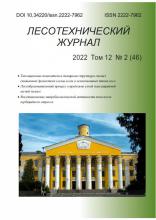Voronezh State University of Forestry and Technologies named after G.F. Morozov (kafedra ekologii, zaschity lesa i lesnogo ohotovedeniya, aspirant)
Sochi, Krasnodar, Russian Federation
Voronezh, Russian Federation
Intensive human exploration of the mountain territories, and the uncontrolled destruction of the Per-sian leopard, has led to that now the predator almost completely disappeared from the Russian part of the Caucasus. Currently, self-healing of the Caucasian leopard population is considered impossible, and the only way out of this situation is the reintroduction of species into former habitats. To solve this problem, in the framework of fundamental research of the Russian Academy of Sciences, with the support of WWF-Russia, the Program to restore the Persian leopard population in the Caucasus has been developed.
Persian leopard, reintroduction of populations, breeding in captivity, Western Caucasus
1. Dinnik N.Ya. Rysi i pantery v gorakh Zapadnogo Kavkaza [Lynx and Panther in the mountains of the Western Caucasus]. Priroda i okhota [Nature and hunting], 1998, no. 2. (In Russian)
2. Dinnik N.Ya. Zveri Kavkaza. Kitoobraznye, kopytnye i khishchnye [Beasts of the Caucasus. Cetaceans, ungulates and predators]. Zapiski Kavkazskogo Otdela Imperatorskogo Russkogo Geograficheskogo Obshchestva [Notes of Caucasus Division of the Imperial Russian Geographical Society]. 1914, Vol. 27, no. 1-2. (In Russian)
3. Geptner V.G., Sludskiy A.A. Mlekopitayushchie Sovetskogo Soyuza. T.2. Ch.2. Khishchnye (gieny i koshki) [Mammals of the Soviet Union. V.2. Part2. Carnivorous (hyenas and cats)]. Moscow, 1972, 551 p. (In Russian)
4. Glava Minprirody Rossii Sergey Donskoy i Zamestitel' Predsedatelya Pravitel'stva RF Aleksandr Khlopo-nin 15 iyulya 2016 g. vypustyat v dikuyu prirodu peredneaziatskikh leopardov [The head of the Ministry of Russia Sergey Donskoy and Deputy Prime Minister Alec Sandro Khloponin July 15, 2016 release in the wild leopard]. Source: Press-service of Russian Ministry of Natural Resources, Published: July 7, 2016 Available at: http://www.mnr.gov.ru/news/detail.php?ID=144089. (In Russian)
5. Lovetskiy A.N. Vstrechi s leopardom [Meetings with leopard].Okhota i okhotnich'e khozyaystvo [Hunting and game management], 1956, no. 2, pp. 54-56. (In Russian)
6. Nasimovich A.A. Bars v gorakh Zapadnogo Kavkaza [Bars in the mountains of the Western Caucasus]. Boets-okhotnik [Military hunter], 1938, no. 3, pp.55-56. (In Russian)
7. Novikov G.A. Khishchnye mlekopitayushchie fauny SSSR [Predatory mammals fauna of the USSR] Opredeliteli po faune SSSR [Determinants on the fauna of the USSR]. Leningrad, 2, pp. 270-274. (In Russian)
8. Rožnov S.V., Lukarevsky V.S. Programma po vosstanovleniyu (reintroduktsii) peredneaziatskogo leoparda na Kavkaze [The program of restoration (reintroduction) the Persian leopard in the Caucasus] Institut problem ekologii i evolyutsii im. A.N. Severtsova RAN [A.N. Severtsov Institute of Ecology and Evolution], 2008, pp. 4-60. (In Russian)
9. O peredneaziatskom leoparde [About Persian leopard] WWF Rossiya [WWF Russia]. Available at: http://www.wwf.ru/about/where_we_work/caucasus/persian_leopard/about_persian_leopard (In Russian)
10. Pervaya proverka klasterov leopardov [The first test clusters leopards] Kavkazskiy gosudarstvennyy prirodnyy biosfernyy zapovednik imeni Kh.G. Shaposhnikova [Caucasian State Nature Biosphere Reserve]. Available at: http://www.kgpbz.ru/node/629 (In Russian)
11. Satunin K.A. Mlekopitayushchie Kavkazskogo kraya [Mammals Caucasus region] Tiflis: tip. Kantselyarii namestnika e. i. v. na Kavkaze [Tbilisi: typography Viceroy of His Imperial Majesty in the Caucasus], 1915-1920, Vol. 2. (In Russian)
12. Semenov U.A. Biologicheskiy monitoring v Karachaevo-Cherkessii [Biological monitoring in Karachay-Cherkessia]. Moscaw, 2003, 127 p. (In Russian)
13. Semenov U.A. «Tsentr vosstanovleniya leoparda na Kavkaze» - strategiya reintroduktsii ["Recovery Centre leopard in the Caucasus" - the reintroduction strategy] Trudy Sochinskogo natsional'nogo parka. Vyp. 10. Moskva: Tovarishchestvo nauchnykh izdaniy KMK [Proceedings of the Sochi National Park. Vol. 10. Moscow: Association of scientific editions KMK], 2016, 110 p. (In Russian)
14. Khorozyan I.G. Prostranstvennaya struktura populyatsii i problemy sokhraneniya leoparda Panthera pardus Dis. kand. biol. nauk. [The spatial structure of the population and the conservation of the leopard Panthera pardus. Diss. PhD. biol. Sciences.] 2011, 173 p. (In Russian)
15. Altmann J. Observational study of behavior: sampling methods. Behaviour, 1974, Vol. 49, no. 3/4, pp. 227-267.
16. Askerov E., Talibov T., Manvelyan K., Zazanashvili N., Malkhasyan, A., Fatullayev, P., Heidelberg, A.South-Eastern Lesser Caucasus: The most important landscape for conserving the Leopard (Panthera pardus) in the Caucasus region (Mammalia: Felidae). Zoology in the Middle East, 3 April 2015, Issue 2, pp. 95-101. DOI: https://doi.org/10.1080/09397140.2015.1035003; EDN: https://elibrary.ru/UQNBVX
17. Dunbar R.I. M. Some aspects of research design and their implications in the observational study of behavior. Behaviour, 1976, Vol. 58, no. 1/2, pp. 78-98.
18. Farhadinia M.S., Ahmadi M., Sharbafi E., Khosravi S., Alinezhad H., Macdonald D.W. Leveraging transboundary conservation partnerships: Persistence of Persian leopard (Panthera pardus saxicolor) in the Iranian Caucasus. Biological Conservation, November 12, 2015, pp. 770-778.
19. Sackett G.P. Measurement in observational research. In Observing behavior, vol. 2, Data collection and analysis methods, ed. - Baltimore: University Park Press., 1978, pp. 25-43.
20. Weise F.J., Lemeris J., Stratford K.J., van Vuuren R.J., Munro S.J., Crawford S.J., Marker L.L., Stein A.B. Zoology A home away from home: insights from successful leopard (Panthera pardus) translocations, 2014, pp. 87-93.












